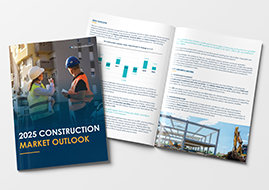
Many people of my grandmother's generation loved to collect Chinese art and artifacts. She had a small cabinet of what she called her chinoiserie collection — porcelain, jade, ivory, celadon ceramics, the works. I, on the other hand, collect Chinese sayings from Confucius, Lao Tzu, General Sun — that crowd. More and more, I find myself thinking of one ancient proverb in particular: "He who rides a tiger is afraid to dismount." The tiger in question is AI.
Property Casualty 360 published two articles side by side last month that neatly bracket the issues with AI: "Verifying AI content is integral to protecting insurers against liabilities", which is a perfect companion piece to "Deepfake AI can hoodwink savvy business leaders and employees". Neither piece provides startling news. Our humble journal has been warning about both issues since we all learned how to spell AI. What's noteworthy is how neatly both pieces summarize the dilemma we all find ourselves in. We want what AI can do for us, but we have to handle it with extreme care because we don't yet understand the ways in which it can backfire on us.
All new technologies bring downsides. A popular music hall song about early automobiles had the refrain, "Get out and get under," because the cars of those days were not at all reliable. And, of course, they frightened horses and other livestock when they did run. Bear in mind that it took almost three decades before automobiles and their associated support systems such as gas stations and paved highways became the way business was done in the US.
The big immediate issue with large language model (LLM) AI is that:
AI algorithms are not infallible; they may exhibit biases or errors, particularly when trained on biased data or subjected to unforeseen circumstances such as system interactions, whereby the AI may encounter new patterns or types of data that were not present in its training datasets. (La Pearl and Trevino 2024)
Older machine learning (ML)-style AI apps pull from much more closely defined, often carefully sanitized data sets that are primarily or entirely quantitative. The vast data troves used by LLM AI can lead to what we politely call "hallucinations." Additionally, LLMs are not always clear on what information in their trove is protected, making data privacy violations an ever-present threat if the operating instructions aren't sophisticated relative to what information may or may not be displayed in a response. In short, these systems have to be closely monitored. "Set it and forget it" isn't recommended with LLMs.
On the other side, AI can provide fraudsters with a whole new range of tools. Think about what this can mean to the ordinary course of claims adjusting. How often do we rely on video clips from CCTV or recorded interviews or photos of property damage to adjudicate claims? What do we do in a world where any given video file, voice recording, or other electronic record may be a deepfake? What new avenues do deepfakes open for our old friend — fraud — with bogus documents to back up bogus billings? What happens to that hard-edged four-letter word, fact? Oh, in case you're wondering, creating deepfakes doesn't require a Ph.D. in computer science. The tech is well within the capabilities of duffers such as yours truly.
There seems to have been no shortage of sessions talking about AI at last month's RIMS conference, but we've been here before with other instances of the technology du jour. To go back to our earlier example of transformative technology, let's look at what happened with automobiles. Early in the last century, the internal combustion engine powered cars, trucks, airplanes, and boats. The sky seemed to be the limit. Speed, convenience, and comfort increased exponentially. Then, we started discovering the downsides — the air pollution, traffic jams, aggregate costs, and, yes, climate change. Now I can take out my 150+ mph Can-Am Spyder and sit in mile after mile of 3 mph traffic on I-95. What will AI look like, say, 50 years from now?
We suggest a few cautions:
- Leave the big bang to the astrophysicists. Until we know AI better, deploying it for modest, local solutions is wise. AI, in effect, has to earn our trust before we turn it loose.
- Use LLM AI for the tasks that ML AI doesn't do well, such as making sense of unstructured data. How much can we accomplish just by opening up all those text boxes in our claims files and using the vital data locked up in adjuster notes?
- Look for low-profile applications with large aggregate impacts on vital processes, such as having AI write claims summaries in English and not adjusterese*.
- Set a thief to catch a thief. Use AI-based fraud detection to ferret out felonious deepfakes for your SIU.
- AI can have a really good eye for catching details that add up. Use it to scan claims for subrogation potential or the likelihood of litigation.
- Consider where an AI-powered support application can help to free up adjuster time for the tasks that human beings still do superbly — such as talking to claimants and understanding their needs and issues.
As this partial list suggests, LLM AI has a large number of relatively humble but important potential applications right now, even while we're learning more about what it can or cannot be trusted to perform without a chaperone. We hear a lot about AI transforming business, wiping out whole swathes of occupations, turning the economy inside out, and so forth. But what if the real genius of AI resides in the small stuff?
* Adjusterese = Supposedly a form of English found only in claim files that uses fanciful abbreviations to avoid keystrokes and clarity.
Author

Dr. Gary Anderberg
Sources
La Pearl, Sarah, and Evan Trevino . 2024. Insurance Companies Must Verify AI Content to Protect Against Liabilities. May 6. https://www.law.com/thelegalintelligencer/2024/05/06/insurance-companies-must-verify-ai-content-to-protect-against-liabilities/.
Make Gallagher Bassett your dependable partner
When making the right decision at the right time is critical to minimize risk for your business, count on Gallagher Bassett's extensive experience and global network to deliver.

